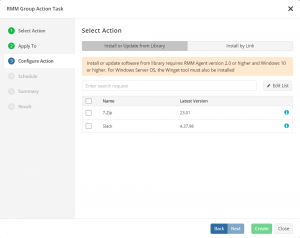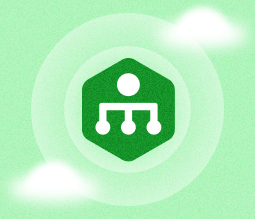Managed service providers (MSPs) understand the importance of being proactive regarding security threats, data breaches, or issues that may cause operational slowdowns. One solution helps safeguard against all this and more — third-party patch management.
Also known as third-party application patching, this essential practice is an important part of the security, performance, and reliability of MSP operations.
Let’s take a closer look at third-party patch management to better understand its impact and importance, particularly for MSPs.
What Is Third-Party Patch Management?
Third-party patch management is the systematic updating of software, drivers, and firmware not directly developed by the manufacturers of the operating system (OS) or hardware.
These applications are essential to daily operations. Unfortunately, they’re also prime targets of cybercriminals. Many cyberattacks exploit these applications' vulnerabilities, making patch management vital for effective cybersecurity.
What Are the Key Benefits of Third-Party Patching?
The boosted security of third-party application patching offers many benefits. Each patched vulnerability shields against potential breaches, safeguarding sensitive data and client information.
Timely updates prevent system failures, reducing the risks of unexpected crashes and downtime and ensuring uninterrupted service delivery. This practice also closes critical security gaps, significantly shrinking the applications available to cyber threats.
Most importantly, proactive patching acts as a deterrent against data breaches. This saves the company from the costly and time-consuming aftermath of these security incidents.
The cybersecurity protections of vigilant third-party application patching lead to other key benefits. These include:
- Ensuring Software Compatibility: By staying up to date on third-party patch management, all software remains compatible with evolving technologies and standards.
- Maximizing Operating Performance: Patched systems operate at peak performance, optimizing the efficiency of client systems and internal operations.
- Enhancing Software Functionalities: Third-party application patching addresses any performance issues in software before they become a problem.
- Saving Costs: A proactive investment in patch management helps save on the substantial costs of system recovery and data breaches.
With all these benefits in mind, let’s dive deeper into the impact and importance of third-party patch management for managed service providers.
Further reading Elevating MSP Success: 5 Strategic Reflections for 2024
Why Is Third-Party Patch Management Essential for MSPs?
Cybersecurity and operational efficiency are extremely important for MSPs. They help keep data safe and clients happy.
Here are the top three reasons why embracing third-party patch management is the right choice for MSPs:
Addresses Security Vulnerabilities: The main goal of patch management is to strengthen systems against potential vulnerabilities. This creates an effective barrier against cyber threats for MSPs. Internal operations and client data are well protected.
Ensures Compliance: Many industries have stringent compliance requirements. Regular patching ensures that MSPs remain compliant with business standards and regulations, no matter the client’s industry.
Maintains Operational Efficiency: MSPs need to keep up with the competition, which means maximizing efficiency. Unpatched systems are prone to glitches and slowdowns, hampering the efficiency of MSP operations and client services.
By adopting a proactive stance towards third-party patching, MSPs improve their cybersecurity protections. With reliable services and a security-conscious team, clients are reassured that the MSP is equipped to handle any existing threats and is diligently working to prevent future attacks.
For MSPs, proactive measures are built into the business. Prioritizing third-party patch management is an opportunity to stand out from the competition. This essential practice safeguards against cyber threats, while maintaining smooth operations and boosting efficiency. It’s also a great way to demonstrate a commitment to security to current and potential clients.
Further reading 3 Ways to Simplify Patch Management for MSPs
Third-Party Patch Management with MSP360 RMM
MSP360 RMM has streamlined the process of installing and updating third-party applications by enabling direct access to the WinGet repository. This integration eliminates the need for extra agents. Leveraging WinGet's functionalities, which come standard in Windows 10 and newer desktop operating systems, ensures a smooth experience.
Users can effortlessly install and update third-party applications via the RMM panel for single computers or through Group Action Tasks for multiple computers.

Conclusion
As the cybersecurity landscape continues to evolve and cybercriminals become savvier, the role of third-party patch management will only become more critical. By understanding its impact and importance, MSPs can address potential issues before they become big problems, ensuring business continuity and client trust.
To streamline third-party patch management, MSPs should consider automating the process. Automation not only simplifies third-party application patching but also makes certain that an update is never missed and data is always completely secure.




